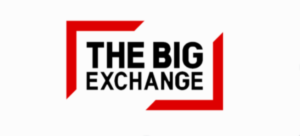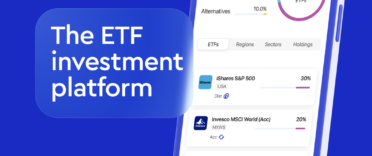 In this review, we assess what The Big Exchange offers, how it is structured, the costs, and how its portfolios have performed in the past. As a relatively new business, we also scrutinise its plans for developing its proposition in the future, as well as considering how safe it is to invest in.
In this review, we assess what The Big Exchange offers, how it is structured, the costs, and how its portfolios have performed in the past. As a relatively new business, we also scrutinise its plans for developing its proposition in the future, as well as considering how safe it is to invest in.
The Big Exchange, co-founded by The Big Issue, is characterised by the way in which it puts sustainable and impact investing at the heart of its business, tapping into the growing demand for ethical investment options - particularly among young and first-time investors. As it only launched in October 2020, it is yet to build up an extensive track record, but it certainly has big ambitions in terms of moving sustainability front and centre of its investment proposition.
It has also has a free mobile app developed in partnership with Moneyhub - you don't even need to be a customer to use it - which securely links up your bank accounts, investments, loans, and credit cards so that you can view everything in one place.
What is The Big Exchange?
Key features |
Wrappers |
Minimum investment |
Fees and charges |
Products |
|
|
|
|
|
The Big Exchange has the stated aim of "building a fairer financial system that works for everyone". In the first instance, this is centred on creating an investment platform that imbeds the United Nations' 17 Sustainable Development Goals into its investment strategy. In doing so, it takes the issues of climate change, discrimination, and inequality - among many other issues - and aims to make a meaningful difference by selecting 62 funds across its portfolios with stocks actively chosen based on their specific ethical credentials and considerations.
As an investment platform, The Big Exchange stands out for favouring actively managed funds to furnish its portfolios, rather than opting for passive vehicles as many of its competitors do. This has the effect of increasing the fees associated with the underlying funds, but also serves to elevate the level of control over exactly what investments are held in the funds. Right now, opting for expensive active funds over passive funds is somewhat unavoidable when building a platform that aims to maximise the positive impact of customers' investments.
How does The Big Exchange work?
The Big Exchange website is clearly set out and easy to navigate, with a basic step-by-step guide to explain the fundamentals of the process of investing with the platform, including the choice of wrappers and the investment options available within them. It is all presented in an easily accessible and conversational manner, which is clearly targeted at those with minimal prior investment knowledge.
There is an explanation of the ways in which the UN Sustainable Development Goals are integrated into the investments, with the 17 targets divided into those that benefit people and those that are beneficial for the planet. Each of the funds is awarded either a bronze, silver, or gold medal, which is based on it meeting at least 1 of the goals, as well as the measurable impact that the investments are having. For the lower bronze level, the fund has to have strategies in place to improve its engagement with the sustainability goals in the future.
A big differentiator that comes from choosing active rather than passive funds is the onus The Big Exchange puts on the fund house itself adhering to the sustainability goals in the way it operates. This includes analysis of the fund providers' corporate practices, the transparency of its reporting, and active engagement with the boards of the companies it invests in to encourage better sustainable practices. As it stands, The Big Exchange offers 63 funds from 22 investment houses.
What can you invest in with The Big Exchange?
As you would expect from this type of platform, the wrappers it offers include a Stocks and Shares ISA, a Junior ISA (JISA) and a general investment account (GIA). Although it doesn't currently have a SIPP within its range, it has previously announced its intention to launch one in the future.
Once you have chosen which type of account you would like, the sign-up process takes less than 10 minutes. For those looking to make a regular monthly contribution, the minimum investment is £25, while it is £100 for a one-off lump sum, although The Big Exchange suggests on its website that this could be reduced in the future. There is no initial fee to open an account or to exit one, and it is also possible to transfer your existing investments into your new account. This is all in line with industry averages. If you do transfer existing investments to The Big Exchange, it will initially be facilitated by putting the investment into cash before you select the funds you want to invest in.
In terms of investment choice, investors can either select the funds they want to invest in from the selection on offer at The Big Exchange or, alternatively, choose from 3 ready-made portfolios, which are known as "bundles". Depending on risk appetite, there are "cautious", "balanced" or "adventurous" bundles. Each bundle contains a variety of individual funds, with the exposure to equities increasing as you move up the risk spectrum. Although these bundles are not actively managed on an ongoing basis, they are reviewed periodically and it is possible for users to adjust their composition and weighting if considered necessary.
How does The Big Exchange manage its portfolios?
The Big Exchange's investment methodology was designed by 3D Investing, which is now part of Square Mile Investment Consulting and Research. As previously discussed, it is based on rating funds on their success in engaging with the UN's Sustainable Development Goals, both in terms of the underlying companies they are investing in as well as their own practices. This is overseen by an impact committee, which monitors the investments and also develops fund profiles that aim to "make the funds come alive" for potential investors.
The success or failure of The Big Exchange will hang on how successful it is at holding the funds to account against the stringent criteria it sets them, particularly as it grows and perhaps includes more funds from a greater number of investment houses into the mix. It has set the bar high in terms of its aims, with a statement that it is committed to avoiding the "greenwashing" so many other providers have been accused of.
What are the fees?
The Big Exchange charges an administration fee of 0.25% per annum, which is competitive when compared with the likes of Wealthify, Moneyfarm and Nutmeg, which all charge between 0.60%-0.75% on average. It also doesn't levy a joining or exit fee and doesn't have any other hidden costs.
Where it is more expensive is in the fees payable for the underlying funds, which range from 0.5%-1.8% per year, depending on the specific funds. This is significantly higher than you would typically expect to pay for a fund that invests in passive vehicles - although, arguably, a well-managed active fund lends itself better to achieving the ethical and sustainable investing goals the investor is prioritising. It means that The Big Exchange's portfolios (which they call "bundles") are more expensive than ethical portfolios from the likes of Wealthify, Moneyfarm and Nutmeg when you take into account fund costs and not just the administration fee.
The Big Exchange includes a fee calculator, which gives investors an indication of how much they are likely to pay, depending on how much they are looking to invest.
What performance can I expect from The Big Exchange?
As the portfolios are relatively new, they are yet to build up a significant track record, which makes it difficult to assess performance. However, we have looked at the past performance of the underlying funds, which give an idea of the past performance of the Cautious, Balanced and Adventurous portfolios over 1, 3 and 5 years. Obviously, this gives no guarantee of potential future returns.
Figures are coloured to reflect each fund's performance versus its peers. Purple means that the fund was in the top 25% of performers over the time period, known as the top quartile. Green means that the fund was in the second quartile of performers over the time period. Yellow means that the fund was in the third quartile of performers over the time period (i.e. underperformed the peer group average). Red means that the fund was in the bottom quartile of performers over the time period (i.e. among the worst performers versus its peer group).
If a number is black, it means that there is insufficient data for the peer group comparison. These figures are up to 1st September 2022.
Cumulative performance for The Big Exchange Cautious portfolio over 1, 3 and 5 years
| Allocation % | 1 year return (%) | 3 years return (%) | 5 years return (%) | |
| AB Sustainable Global Thematic Portfolio | 8% | -10.38 | 42.08 | 73.88 |
| ASI Global Equity Impact Fund | 9% | -10.44 | 28.42 | N/A |
| Pictet Global Sustainable Credit | 11% | 0.33 | -4.12 | 5.14 |
| Pictet Global Environmental Opportunities | 8% | -7.36 | 41.89 | 67.14 |
| Pictet Global Thematic Opportunities | 10% | -11.00 | 19.59 | 42.21 |
| Liontrust Sustainable Future Global Growth | 15% | -16.90 | 34.51 | 72.47 |
| ASI Ethical Corporate Bond | 10% | -19.12 | -13.23 | -6.37 |
| Liontrust Monthly Income Bond | 10% | -14.20 | -5.42 | -1.47 |
| Liontrust Sustainable Future Corporate Bond | 6% | -18.84 | -11.74 | -5.46 |
| Threadneedle UK Social Bond | 13% | -11.10 | -7.39 | -2.81 |
Cumulative performance for The Big Exchange Balanced portfolio over 1, 3 and 5 years
| Allocation % | 1 year return (%) | 3 years return (%) | 5 years return (%) | |
| AB Sustainable Global Thematic Portfolio | 10% | -10.38 | 42.08 | 73.88 |
| ASI Global Equity Impact Fund | 12% | -10.44 | 28.42 | N/A |
| UBAM Positive Impact Equity | 8% | -23.86 | 13.53 | N/A |
| Pictet Global Sustainable Credit | 7% | 0.33 | -4.12 | 5.14 |
| FP WHEB Sustainability | 7% | -14.97 | 19.50 | 32.48 |
| Pictet Global Thematic Opportunities | 15% | -11.00 | 19.59 | 42.21 |
| Liontrust Sustainable Future Global Growth | 15% | -16.90 | 34.51 | 72.47 |
| Quilter Investors Ethical Equity | 8% | -6.02 | 37.42 | 49.04 |
| Liontrust Sustainable Future Corporate Bond | 7% | -18.84 | -11.74 | -5.46 |
| Threadneedle UK Social Bond | 11% | -11.10 | -7.39 | -2.81 |
Cumulative performance for The Big Exchange Adventurous portfolio over 1, 3 and 5 years
| Allocation % | 1 year return (%) | 3 years return (%) | 5 years return (%) | |
| AB Sustainable Global Thematic Portfolio | 11% | -10.38 | 42.08 | 73.88 |
| ASI Global Equity Impact Fund | 12% | -10.44 | 28.42 | N/A |
| UBAM Positive Impact Equity | 3% | -23.86 | 13.53 | N/A |
| FP WHEB Sustainability | 15% | -14.97 | 19.50 | 32.48 |
| Pictet Global Environmental Opportunities | 14% | -7.36 | 41.89 | 67.14 |
| Pictet Global Thematic Opportunities | 15% | -11.00 | 19.59 | 42.21 |
| Liontrust Sustainable Future Global Growth | 15% | -16.90 | 34.51 | 72.47 |
| Quilter Investors Ethical Equity | 15% | -6.02 | 37.42 | 49.04 |
What is noticeable from first glance is that there is a great deal of overlap of funds featuring across multiple portfolios. When we dig a little deeper, we can see that the 3 and 5 year returns are, on the whole, in the top two quartiles in terms of performance versus their respective sector peer groups, with many ranking towards the top of the first quartile. However, some of the funds have performed less favourably due to their exposure to clean energy and technology stocks, which have responded negatively to interest rate hikes in recent months.
How safe is The Big Exchange?
Consumers can be naturally wary of new propositions, although its links to The Big Issue through parent-company The Big Issue Group mean that The Big Exchange has strong foundations. It is also backed by big-name "founder partners", including Standard Life Aberdeen, Columbia Threadneedle, Quilter, Liontrust, AllianceBernstein, Nordea, and Pictet Asset Management. It is headed up by industry stalwart Campbell Fleming, who left his role as global head of distribution at Standard Life Aberdeen to join The Big Exchange. Investments made with The Big Exchange are covered by the Financial Services Compensation Scheme, which protects up to £85,000 if it - or its parent-company - were to go bust.
What are the alternatives to The Big Exchange?
With ethical investing increasingly moving to the mainstream, there are a growing number of options available. This includes Nutmeg, Moneyfarm and Wealthify, offering 10, 7 and 5 dedicated ethical portfolios respectively. At the more innovative end, platforms such as Circa5000 are targeting millennials who have an interest in impact investing across the themes of climate change and equality, while ethical bank Triodos is also trying to shake up the existing system to make it fairer and more sustainable. A full review of other ethical options can be found in our article "Which are the best ethical Stocks and Shares ISAs?"
Conclusion - Should I invest with The Big Exchange?
The Big Exchange has an interesting and ambitious plan in place and, if successful, could act as a further catalyst in moving ethical investing more firmly into the mainstream. It also has further developments in the pipeline, with the addition of a SIPP planned to launch in the near future. As it stands, it is too early to judge, but the ingredients are there for The Big Exchange to be a key player in this space as it begins to gain traction. It will appeal to those that want to get into ethical investing, but want a jargon-free and hands-off approach where costs and investment choice are not their most important considerations.



